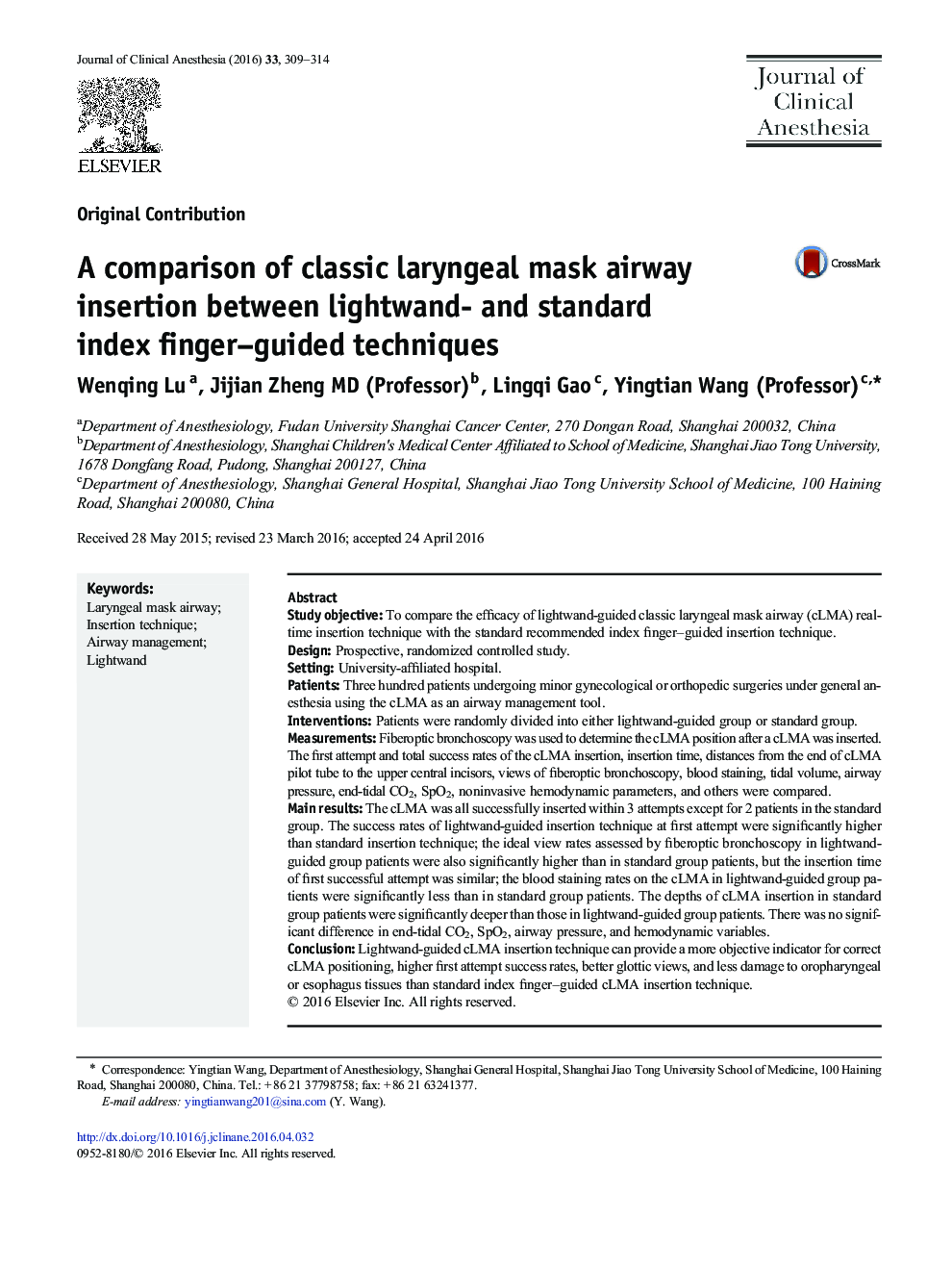| Article ID | Journal | Published Year | Pages | File Type |
|---|---|---|---|---|
| 2762119 | Journal of Clinical Anesthesia | 2016 | 6 Pages |
•Efficacy of lightwand-guided and standard cLMA insertion techniques was compared.•Lightwand-guided technique provided a more objective indicator for cLMA positioning.•Lightwand-guided technique improved first attempt success rates and glottic views.•Lightwand-guided technique caused less damage to oropharyngeal or esophagus tissues.
Study objectiveTo compare the efficacy of lightwand-guided classic laryngeal mask airway (cLMA) real-time insertion technique with the standard recommended index finger–guided insertion technique.DesignProspective, randomized controlled study.SettingUniversity-affiliated hospital.PatientsThree hundred patients undergoing minor gynecological or orthopedic surgeries under general anesthesia using the cLMA as an airway management tool.InterventionsPatients were randomly divided into either lightwand-guided group or standard group.MeasurementsFiberoptic bronchoscopy was used to determine the cLMA position after a cLMA was inserted. The first attempt and total success rates of the cLMA insertion, insertion time, distances from the end of cLMA pilot tube to the upper central incisors, views of fiberoptic bronchoscopy, blood staining, tidal volume, airway pressure, end-tidal CO2, SpO2, noninvasive hemodynamic parameters, and others were compared.Main resultsThe cLMA was all successfully inserted within 3 attempts except for 2 patients in the standard group. The success rates of lightwand-guided insertion technique at first attempt were significantly higher than standard insertion technique; the ideal view rates assessed by fiberoptic bronchoscopy in lightwand-guided group patients were also significantly higher than in standard group patients, but the insertion time of first successful attempt was similar; the blood staining rates on the cLMA in lightwand-guided group patients were significantly less than in standard group patients. The depths of cLMA insertion in standard group patients were significantly deeper than those in lightwand-guided group patients. There was no significant difference in end-tidal CO2, SpO2, airway pressure, and hemodynamic variables.ConclusionLightwand-guided cLMA insertion technique can provide a more objective indicator for correct cLMA positioning, higher first attempt success rates, better glottic views, and less damage to oropharyngeal or esophagus tissues than standard index finger–guided cLMA insertion technique.
